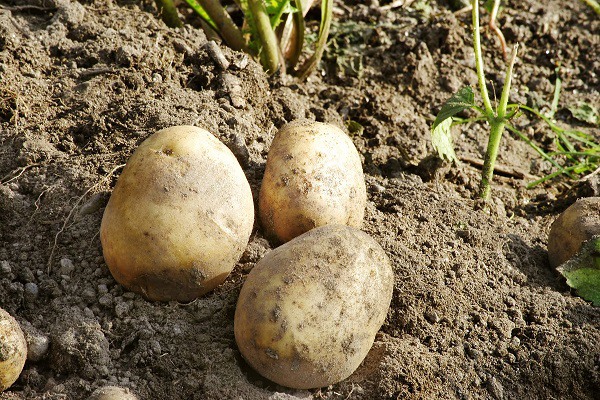The second half of the French potato season has started, with a “rather favorable market, sustained prices, dynamic outlets for the French market, and an export market presenting many opportunities.” Commitments for the next campaign are also being finalized, with a crucial issue this  year: the reduction in planted surface area. According to Francisco Moya, director of Vitalis and president of CNIPT, “we have built our offer in France on French seedlings.” The reduction in planted areas has repercussions on the fresh produce sector, and it also raises the question of health safety “linked to the availability of certified and controlled seedlings.” But Francisco Moya believes that the situation reflects nothing more than a “growth crisis.”
year: the reduction in planted surface area. According to Francisco Moya, director of Vitalis and president of CNIPT, “we have built our offer in France on French seedlings.” The reduction in planted areas has repercussions on the fresh produce sector, and it also raises the question of health safety “linked to the availability of certified and controlled seedlings.” But Francisco Moya believes that the situation reflects nothing more than a “growth crisis.”
Francisco Moya
“The sector is reshuffling the cards”
In recent months, the sector has undergone a paradigm shift. Last November, FEDEPOM predicted that the production of certified French seedlings would fall by almost 11% by 2023 (60,000 tons less). The reasons for this decline in production include the arbitration by collectors on the basis of varieties, due to the unsold seedlings from the previous campaign, as well as the sharp drop in acreage. Today, many seedling growers prefer to turn to “more interesting” outlets because they are more profitable.
“The sector is in the process of reshuffling the cards,” explains Francisco Moya. “The demand for processing is growing, especially for French fries, so more and more growers are being recruited with a committed pricing dynamic to be able to attract and achieve the development objectives.” But for the time being, according to Francisco Moya, “the seedlings available are divided between the needs of the fresh and processing markets.”
Increasingly difficult seedling production
More remunerative outlets, especially as seedling production is becoming more difficult for growers. “On the one hand, the climate conditions are having an impact on the availability of seedlings, with rather radical weather episodes occurring year after year. Additionally, the greater regulatory pressure tends towards a reduction of inputs and greater agronomic constraints.” The specifications for seedling production are also “more demanding and therefore more difficult to meet,” explains Francisco Moya. “The sector works with a more limited number of varieties, and the specification criteria are fewer and easier to control, such as the visual criteria, which are not taken into account.”
 © Lavinia Bordea | Dreamstime © Dreamstime
© Lavinia Bordea | Dreamstime © Dreamstime
What are the alternatives?
Seedling availability continues to decline, but what are the solutions for the sector? “Some could look for alternative solutions in other countries, or cut seedlings to be able to plant anyway. Another solution would be to plant on farms, which already exists and is practiced under certain well-regulated conditions. However, everyone needs to stick to what national regulations allow and be aware that inadequate solutions can put their farms at risk.”
According to Francisco Moya, rather than looking for short term alternatives, “the seedling and fresh produce sectors need to find a balance, to adapt and remain vigilant in order to ensure that the imbalance that could be created by this new situation does not impoverish the sector.”
For more information:
Francisco Moya
Réseau Vitalis
Phone: +33 3 87 92 42 33
[email protected]










